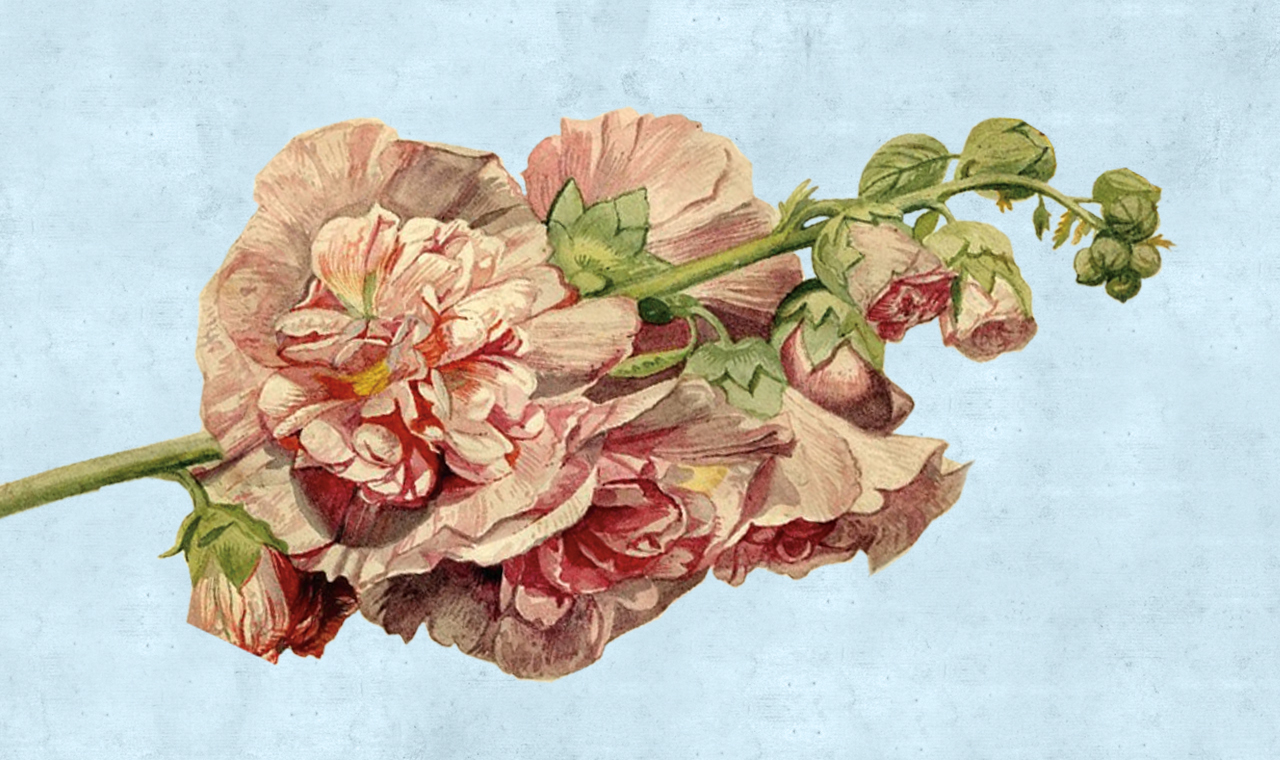
“I am insatiable where hyacinths and tulips are concerned, greedy for ranunculi, and especially for anemones,” wrote Telemann in a letter. You can still find flowers and plants from his 1742 Hamburg flower garden, plus scores of others he traded with the leading botanists of Europe and possibly even the New World, in fine Philadelphia gardens today.
Telemann gardens at Bartram’s Garden, Powel House and Hill-Physick House.
Georg Telemann was an avid gardener in his Hamburg home, and engaged in a bulb and plant exchange with the leading botanists of his time all across Europe. His notes and observations on his beloved flowers have struck a chord with present-day curator Joel Fry at Bartram’s Garden in Philadelphia, where, incidentally, John Bartram (1699-1777) was in contact with the same botanists.
“I’ve long known Telemann as a composer, but had never heard about his interest in gardening, or that his garden in Hamburg survived into the middle of the 19th-century. The lists of plants in the Telemann garden in 1742 is very much a typical European flower garden collection for that time, and we have evidence for many if not most of the same species growing here at Bartram’s Garden in the lifetime of the first Bartram, John Bartram,” Mr. Fry said.
Telemann successfully forged connections with famous botanists, such as Albrecht von Haller (founder of the botanic gardens in Göttingen), and to Johann Gottlieb Gleditsch, who headed the Berlin botanical garden, for whom a common eastern North American tree, the honey locust, Gleditsia triacanthos, was named by Carl Linnaeus, the Swedish botanist, physician, and zoologist, who formalized the modern system of naming organisms.
Friends in Music & Gardening
Von Haller sent Telemann rare seeds, and he received exotic cacti and aloes from his friend Johann Georg Pisendel, who was the concertmaster of baroque Europe’s most superb orchestra, the Dresden Hofkapelle (now known as the Dresden Staastskapelle). Telemann also studied the voluminous mail-order catalogs of the then well-known “Caspar Bosisch Gardens” in Leipzig, run by Johann Ernst Probst.
Telemann’s Hamburg garden became quite well known. In 1753 Christlob Mylius, a cousin of author, playwright and Enlightenment philosopher Gotthold Ephraim Lessing, reported that in it “many strange and beautiful plants” can be found. Even through the mid 19th century, his garden was considered one of the most prominent from the previous century in Hamburg.
In 1754, Telemann’s great friend and colleague George Frideric Handel sent him a crate of “the best plants in all England” possibly from the Chelsea Physick Garden, where Philip Miller was head gardener. Miller was a friend and collaborator with London merchant Peter Collinson, a customer and correspondent of John Bartram.
Collinson himself was an interesting character. He was one of the Founding Governors of the Foundling Hospital, and involved in the work there. Handel was elected a Governor of the Foundling Hospital in 1750, and produced a famous fund-raising performance of Messiah there (and donated some scores which the Hospital trust still owns today). Very likely Peter Collinson would have heard some of Handel’s music in London.
A Philadelphia Connection
John Bartram sent new North American garden plants and seeds to Collinson in London, and Collinson sent Bartram all the latest European garden plants and seeds from London. But Collinson also had a wide European correspondence, and there are occasional references that Bartram plants or seeds went to the Netherlands, France, and Germany.
The heirs of John Bartram continued having an impact in the world of gardening and botany for years after his death. The archives at Batram’s Garden have records of shipments to Germany and Austro-Hungarian cities such as Hamburg, Heidelberg, Vienna, and Prague well into the 1850s. In the years after the American Revolution, there was increased academic contact with German and European universities and botanic collections. There was considerable correspondence between Philadelphia botanists and the German universities at Göttingen, Berlin, Ansbach, Leipzig and Vienna. John Bartram’s son, William Bartram (1739-1823) had many contacts with European naturalists, and William Bartram’s book, Travels, first published in Philadelphia in 1791 and documenting his southern explorations, was translated and reprinted in Paris, Amsterdam, Berlin and Vienna.
There are also some hints that the Bartram family was interested in music, at least in the second and third generations, even though early Quaker families in Pennsylvania often shunned art and music. A Philadelphia-made, one-key boxwood flute, made by Jacob Anthony, ca. 1785-1810, and apparently first owned by the son William Bartram, can be viewed in the Bartram exhibit. An estate inventory of a Bartram nephew who died in 1818, and lived as a neighbor to Bartram’s Garden, listed a violin and two flutes. So we assume there was some family music-making in Bartram’s household. Perhaps they even performed Telemann’s chamber music!
Download: A list of plants and flowers in Georg Telemann’s garden.
